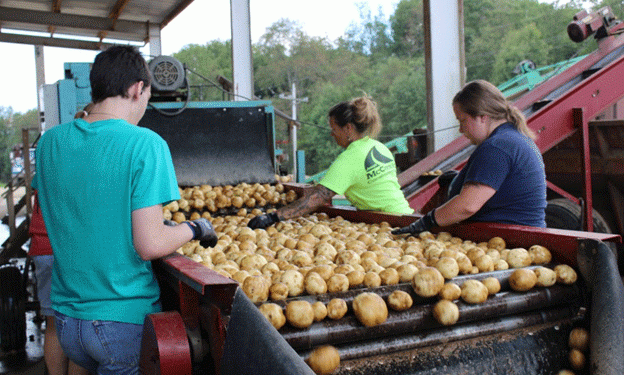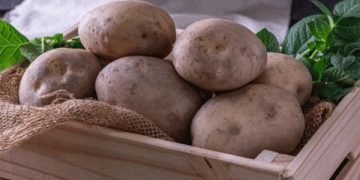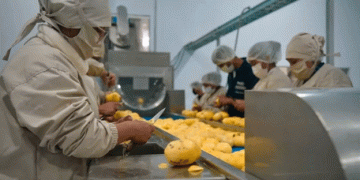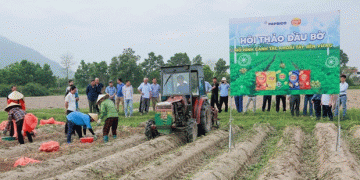In just ten years, the average price of a 16-ounce bag of potato chips has increased from under $4.50 to approximately $6.50, outpacing inflation for many grocery items. While several factors contributed to this surge, including transportation costs and climate conditions, the underlying challenges faced by potato growers are more complex and far-reaching.
Kevin Troyer, a potato farmer in Waterford, Pennsylvania, recently witnessed the arrival of freshly harvested potatoes at his farm. Despite favorable weather conditions this season, potato farming in the region has become increasingly challenging, with growers grappling with climate change’s impacts. For Troyer, cool nights have been a blessing; potatoes thrive in cooler temperatures, ideally around 50 degrees Fahrenheit.
Transportation Costs and Local Sourcing
Pennsylvania is home to more potato chip manufacturers than any other state, making the local sourcing of potatoes crucial. Factories prefer to buy from nearby farms to minimize transportation costs, which have significantly increased due to rising fuel prices. The proximity of growers to processing facilities, like the Snyder of Berlin chip factory near Pittsburgh, helps maintain product freshness and reduces logistical challenges.
However, local growers face hurdles as climate change alters weather patterns. According to Bob Leiby, an agronomist with the Pennsylvania Cooperative Potato Growers, warmer weather has increased the number of nights with unfavorable temperatures for potato growth. In the 1980s, Erie, Pennsylvania, experienced approximately 35 nights a year with temperatures too hot for potatoes; today, that number has risen to around 50 nights. Excessive soil temperatures can severely harm potato crops, making it essential for farmers to adapt to these shifting conditions.
Adapting to a Changing Climate
To maintain potato production in the Northeastern U.S., researchers are focusing on developing potato varieties better suited to the region’s changing climate. Walter De Jong, a potato genetics researcher at Cornell University, emphasizes the need for crops that can withstand higher temperatures and resist diseases exacerbated by climate change.
While states like Idaho and Washington benefit from extensive land and advanced irrigation, their reliance on long-distance transportation for potato sourcing increases costs and carbon footprints. De Jong argues for a balanced approach, advocating for local production to ensure food security during climate-related disruptions.
In 2011, Cornell University released a potato variety developed by De Jong that helped Northeastern farmers store their crops longer, ensuring an adequate supply for peak seasons like the Super Bowl. This innovation not only supports local economies but also reduces dependence on out-of-state potatoes, promoting sustainability in the region.
The Broader Implications for Potato Prices
The rising cost of potato chips is not merely a reflection of increased production costs but also a consequence of disrupted supply chains and shifting consumer demand. As the agricultural sector grapples with the implications of climate change, local production emerges as a vital strategy for ensuring food security and stabilizing prices.
Investing in local agriculture can lead to more resilient food systems that are less susceptible to the volatility of global markets. As communities increasingly seek sustainable solutions, the value of local potato production becomes evident—not just in economic terms but also in fostering a more robust and sustainable food supply.
A Path Forward for Potato Growers
As farmers like Kevin Troyer continue to navigate the complexities of potato production amid rising prices and climate challenges, the focus on local sourcing and sustainable practices becomes paramount. The potato chip industry must adapt to these changes to ensure future profitability and security. By investing in research, technology, and community-based farming practices, growers can enhance resilience against climate fluctuations and secure a stable supply for consumers.






